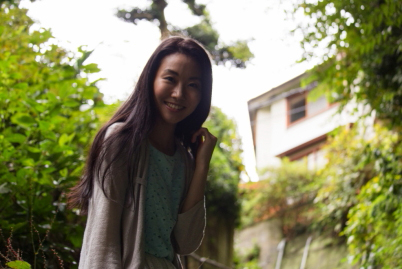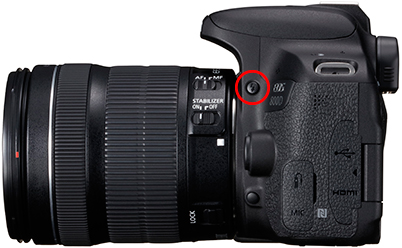Built-in Flash Techniques #1: Dealing with Harsh Shadows in Backlight
Did you know that a flash can be useful in daytime? For example, it can help to reduce shadows that occur on a model's face and body when you shoot into the sun. Find out how to do that with your built-in flash in the first of this 6-part series. (Reported by: Teppei Kohno)

FL: 45mm (72mm equivalent)/ Manual exposure (f/8, 1/200 sec)/ ISO 100/ WB: Auto
How does a flash help me take better backlit portraits?
Exposure compensation isn’t always effective
When you shoot portrait photos against the sun (backlight), it causes strong shadows on your model’s face and body. In other words, the background is a lot brighter than the foreground, where the model is.
The first instinct of many photographers will be to increase the exposure compensation to brighten the shot. However, as this adjusts the exposure for the entire image by the same level, it does not help to balance out the differing contrasts.
For example, using positive exposure compensation could make the background too bright (overexposed), even though the foreground remains not bright enough.
Solution: Add light to the foreground
To get a better shot in backlight, you need to balance out the uneven lighting by adding light to the model’s face and body. One way is to find something that reflects light onto the model, but it’s not always possible especially when you are outdoors. This is where a flash comes in handy.
And when you don’t have an external flash with you, your built-in flash could work, too.
With exposure compensation

FL: 55mm (88mm equivalent)/ Aperture-priority AE (f/4, 1/50 sec)/ ISO 400/ WB: Auto
Exposure compensation was set to EV+1, which brightened the background so much that the highlights are blown. However, the model’s face area is still quite dark.
With the built-in flash

FL: 55mm (88mm equivalent)/ Aperture-priority AE (f/4, 1/160 sec)/ ISO 400/ WB: Auto
Using a built-in flash made the model’s face look brighter. It has also evened out the contrast in background and foreground brightness.
Know this: The light from a built-in flash is harsher than that from an external flash
This is because of the smaller flash-emitting area on a built-in flash, which makes the light more concentrated into a small area and therefore more intense. External flashes have a larger flash-emitting area, which diffuses the light. Don't confuse this with flash power: The light from an external flash can reach further than that from a built-in flash.
To see the different effects of a built-in flash and external flash, check out:
5 Portrait Photography Techniques to Take You from Day to Night
How Do I Capture Portraits With Background Bokeh Under Backlit Conditions?
Learn more about the benefits of an external flash in:
What are the Benefits of an External Flash?
How to use the built-in flash
1. Look for the flash pop-up button and press it*.
It has the flash icon on it, and is usually on the left side of the camera body.

*Some cameras don't have a flash pop-up button. In this case, you will have to manually raise the flash.
2. Make sure that your exposure is adjusted to properly expose the background.
You can use any mode for now, but the Av, Tv and Manual exposure modes will allow you to do more, as we will find out in future articles.
3. Check your composition and release the shutter.
And you're done! If you feel that your model's face is now too bright, you will have to use flash exposure compensation to adjust the flash output. We will learn more about that in the next article.
Tip: When holding your camera vertically, make sure your finger isn’t covering the flash
This might sound like a no-brainer, but it happens more often than you think, especially when you are focused on other things such as getting the composition right or interacting with the model.
Failed shot

FL: 18mm (28mm equivalent)/ Manual exposure (f/8, 1/200 sec)/ ISO 100/ WB: Auto
The shadow on the model's torso is the result of a finger blocking the flash.
Successful shot

FL: 18mm (28mm equivalent)/ Manual exposure (f/8, 1/200 sec)/ ISO 100/ WB: Auto
When the camera is held correctly without covering the built-in flash, the light will be distributed evenly.
Receive the latest update on photography news, tips and tricks.
Be part of the SNAPSHOT Community.
Sign Up Now!About the Author
Born in Tokyo in 1976, Kohno graduated with a Social Work degree from the Department of Sociology of Meiji Gakuin University, and apprenticed with photographer Masato Terauchi. He contributed to the first issue of photography magazine PHaT PHOTO and became an independent photographer after that, in 2003. The author of many books, Kohno not only shoots all sorts of commercial photographs, but also writes prolifically for camera and other magazines.

































